Site Search
Displaying results 91 - 100 of 574
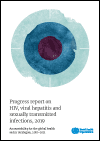
Resource | Publications,
WHO is accountable for reporting back to the World Health Assembly on progress in implementing the Global health sector strategies on HIV, viral hepatitis and sexually transmitted infections based on data received from countries. This report assesses the mid-term progress in 2019 in implementing these global health sector strategies from 2016 to 2021.
The timeliness and availability of the data across the three diseases is limited, being for 2016 or 2017 in most cases. Key data, including 2018 impact data on incidence and mortality, were not available for this report, making it difficult to assess and validate overall trends since the launch of the strategies in 2016.
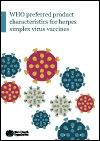
Resource | Publications,
WHO preferred product characteristics (PPCs) provide strategic guidance as to WHO’s preferences for new vaccines in priority disease areas. PPCs are intended to encourage innovation and development of vaccines for use in settings most relevant to the global unmet public health need. Development of one or more herpes simplex virus (HSV) vaccines is an important objective for sexual and reproductive health worldwide. HSV vaccine PPCs describe global public health goals for HSV vaccines and preferred parameters pertaining to vaccine indications and target populations, safety and efficacy considerations, research and development, and immunization strategies.
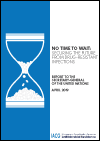
Resource | Publications,
The 2016 Political Declaration of the High-level Meeting of the United Nations General Assembly on Antimicrobial Resistance represented a landmark in the world’s commitment to tackling antimicrobial resistance, calling for greater urgency and action in response to its many challenges. In the political declaration, Member States requested the Secretary-General, in consultation with the Food and Agriculture Organization of the United Nations (FAO), the World Organisation for Animal Health (OIE) and the World Health Organization (WHO) to convene an ad hoc interagency coordination group (IACG) co-chaired by the Executive Office of the Secretary-General and the Director-General of WHO to provide practical guidance for approaches needed to ensure sustained, effective global action to address antimicrobial resistance. It also requested the Secretary-General to submit a report for consideration by Member States by the seventy-third session of the General Assembly in 2019 on the implementation of the political declaration and on further developments and recommendations emanating from the IACG, including on options to improve coordination, considering the 2015 Global Action Plan on Antimicrobial Resistance.
This report presents the IACG’s response to the request from Member States in the 2016 political declaration and makes recommendations for urgent action for consideration by the Secretary-General, Member States and other stakeholders in the global response to antimicrobial resistance.
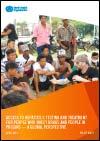
Resource | Publications,
WHO estimates that 71 million people worldwide were chronically infected with hepatitis C virus (HCV) in 2017. Globally, 23% of new HCV infections and one in three HCV deaths are attributable to injecting drug use (PWID). HCV is also a major concern for people detained in prisons and other closed settings – available data demonstrate that one in four detainees are HCV positive.
This policy brief highlights the current landscape of country hepatitis policies for harm reduction and HCV testing and treatment in PWID and people in prisons. It aims to capture how governments are translating the WHO Global health sector strategy on viral hepatitis, 2016-2021 into national plans, and provides a summary of the enablers and barriers to HCV testing and treatment in these populations.
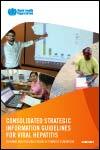
Resource | Guidelines,
The Consolidated strategic information guidelines for viral hepatitis summarize and simplify the overall approach proposed by WHO to collect, analyse, disseminate and use strategic information on viral hepatitis at local, subnational, national and international levels.
The document describes the use of strategic information at various stages of the response in the context of strengthening broader health information systems. Strategic information can be defined as data collected at all service delivery and administrative levels to inform policy and programme decisions.
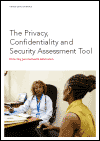
Resource | Tools,
With scaling-up of HIV and other health services in low- and middle-income countries, an increasing amount of personally identifiable health information is being collected at health facilities and stored in data repositories at local, regional and national levels. Countries need to protect the confidentiality and security of identifiable and de-identified personal health information, and this can be accomplished in part through the existence and implementation of relevant privacy laws, policies and programmes.
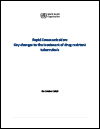
Resource | Publications,
Providing evidence-based guidelines to inform public health service delivery for Member States and other stakeholders is one of the core responsibilities of the World Health Organization (WHO). To support countries in responding to the challenges of TB and drug-resistant TB, the WHO Global TB Programme regularly issues evidence-based guidelines using the international GRADE4 (Grading of Recommendations, Assessment, Development and Evaluation) approach for scientific evidence assessment.

Resource | Publications,
For the past fifteen years, ITPC has succeeded in building capacity of communities in every region of the world to identify and address long-standing and emerging public health problems. Working closely with a global network of activists that includes coalitions of key and vulnerable populations, ITPC provides treatment information and education to encourage people most at risk to seek testing, optimal treatment and quality health care.
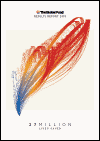
Resource | Publications,
The impact of investments in health can be measured in many ways, and one of the most important measures is how many lives are saved. Health programs supported by the Global Fund partnership have saved 27 million lives as of the end of 2017.
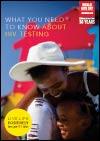
Resource | Publications,
Strong global commitment to end AIDS has driven huge progress. In 2017, around 75% of people living with HIV globally knew their HIV status and 59% of all people living with HIV were accessing treatment.
However, new HIV infections are not declining fast enough and too many people are still dying from AIDS-related illnesses despite the availability of high-quality and effective treatment. And with 36.9 million men, women and children living with HIV around the world, there are more people than ever before living with HIV. A quarter don’t even know that they have the virus.





